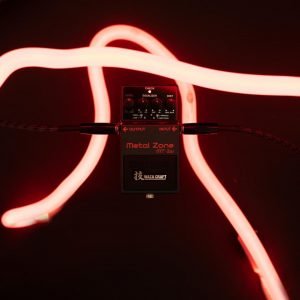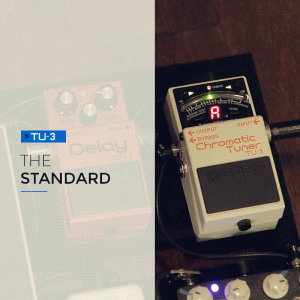The BOSS Talk article looks deeper at the various types of traditional reverb of spring and hall, and the esoteric “shimmer” and modulate, to give your guitar tone that spatial magic!
Contributed by Christian Moraga for the Roland Australia Blog
Humans hear the sounds around us as sound waves. These waves travel through the air and “reflect” off smooth surfaces and are “absorbed” by textured surfaces. The amount of reflections all depend on the acoustic space of the sound – this is why you hear sound differently in a deep cave as opposed to a small room.
Try this sound test: Go to your bathroom, clap, and listen to the decay of the sound. Then go to your bedroom, clap, and listen again. The two spaces sound very different due to the reflections and absorptions of the sound waves around your ears.
The character of these reflections, and its decay, is reverb and is very important in making the things you hear sound “natural”. A world where these reflections do not exist (like in an anechoic chamber), and will make you either fall very ill or go very mad!
The acoustic environment is important for our ears when it comes to music. The finest Opera Houses, Concert Halls and Cathedrals around the world have a rich reverberation character. The acoustic design of these spaces emphasise the music played between the hallowed walls, with reverb being a major factor in this harmonious ambience. If you are interested in the science of reverb, you should jump ahead to the TECHNICAL SECTION – THE STRUCTURE OF A REVERB SIGNAL.
REVERB FOR GUITARISTS
Aside from recreating a sense of natural space, reverb is also a very important creative tool for musicians, and specifically guitarists. Some of the earliest electric guitar amplifiers had spring reverb tanks to provide the musician with a portable reverb option, wherever they played. This added dimension to guitar tone is important in making the instrument sit in a mix, both live and in a recorded track.
Guitarists have a large number of reverb types at their disposal – reverb models designed to capture “natural” ambience, to more esoteric effects that provide the guitar part with space or movement. Choosing the type of reverb, and the amount, is crucial in getting the right feel for the track.
Compact reverb pedals provide great spatial effects that you can take with you live on stage. You can access emulations of different types of reverbs found in recording studios to the natural world – all at the end of your pedal board.
Here is a brief look at some of the classic types of reverbs heard on your favourite tracks and albums.
SPRING
The spring reverb was popularised by the famous Fender combo amplifiers of the 1960’s. These combos, provided reverb and tremolo, for a compact effects solution for the gigging guitarist. This classic sound was immortalised by surf-rock guitarists like Dick Dale and the song “Wipe Out” by The Surfaris. Classic effects units, like the Roland Space Echo, also used spring reverb to add some portable ambience.
Spring reverb works by sending the audio signal through a two- or three-spring tank and recording the vibrations across the springs. This provides a “splashy” or “drippy” sound – especially when struck with a hard attack on the guitar strings, or the percussive tremolo-picking techniques of surf guitar.
ROOM
A sound of a room is like a fingerprint – each room has different reflective and absorptive surfaces, shape and height that add character to the natural acoustic sound. Recording the reverb in a room can take multiple microphones, at calculated distances, all designed to capture that “live” element of the cranked amplifier in the room.
A classic recorded guitar track with a great room reverb sound is “Dancing Days” by Led Zeppelin. You can hear the short decay of the reverb that is characteristic of a room sound. A good room reverb recording has a close mic on the amplifier and another omni-directional dynamic mic further back to place the listener in the same space. A reverb effect pedal emulates this microphone placement by allowing you to mix the amount of room sound with your dry sound.
Plate reverb models originate from the classic 1957 EMT 140 Plate Reverberation Unit – a huge 300kg machine that offered recording engineers a more versatile and simple process for capturing reverb. Instead of setting up a complex network of microphones in an echo room or chamber, a plate reverb unit allows the engineer to adjust the reverb time by using a damping pad system.
Much like the spring reverb system, audio is played through a metal plate and the vibrations of the plate are recorded to produce a full-bodied reverb (as opposed to the high-end roll-off of spring). The large surface area of the plate reduces the echoes, or early reflections, of the reverb providing a very smooth decay.
HALL
If you have ever had the chance to listen to a symphonic or orchestral performance, you would know how important the natural acoustic space is to the music. Every factor of the concert hall, from its volume, shape, surface materials, seat capacity, (and so much more) play a role in the long decay that is characteristic of hall reverb.
Hall reverb typically has a natural decay of up to 3 seconds. This favours orchestral instruments, like violins for example. As the reverb tail from each note blends and decays with the previous note, it surrounds the notes in its natural harmonics adding a width to the instrument’s tone. However, too much decay and the notes will bleed together making fast passages a listening challenge. Finding this balance makes for a great hall sound.
This reverb sound can inspire guitarists to create their own grandiose, orchestral sound. Using hall reverb suits a minimal playing style – letting the notes breathe amongst the reverb tails for a unique, uplifting tone. No need to go to a hall if you have this setting in your stompbox!
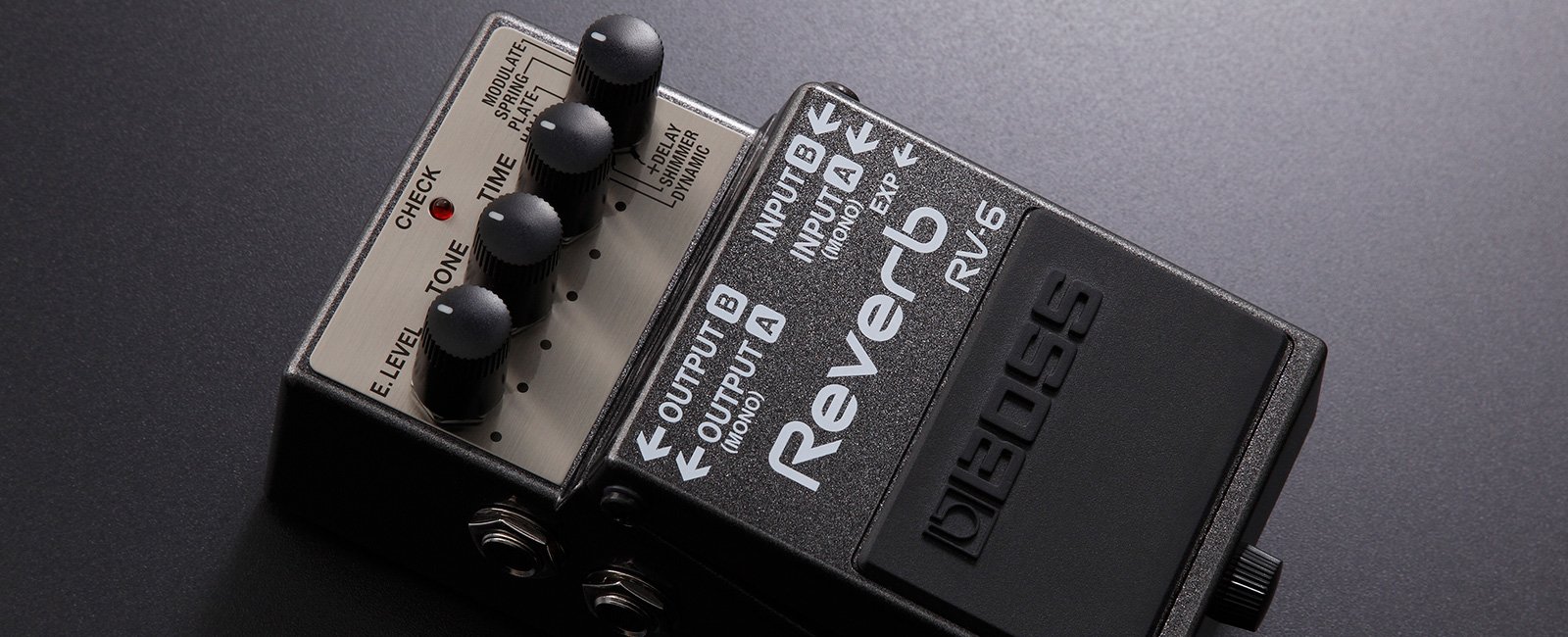
Now let us look at some of the new modes found on the new BOSS RV-6 Reverb pedal.
MODULATE
The MODULATE sound combines the hall reverb algorithm with one of BOSS’ legacy effects – chorus. BOSS introduced chorus in stompbox form with the highly collectable CE-1 Chorus Ensemble and continued with a great number of products with that classic chorus sound.
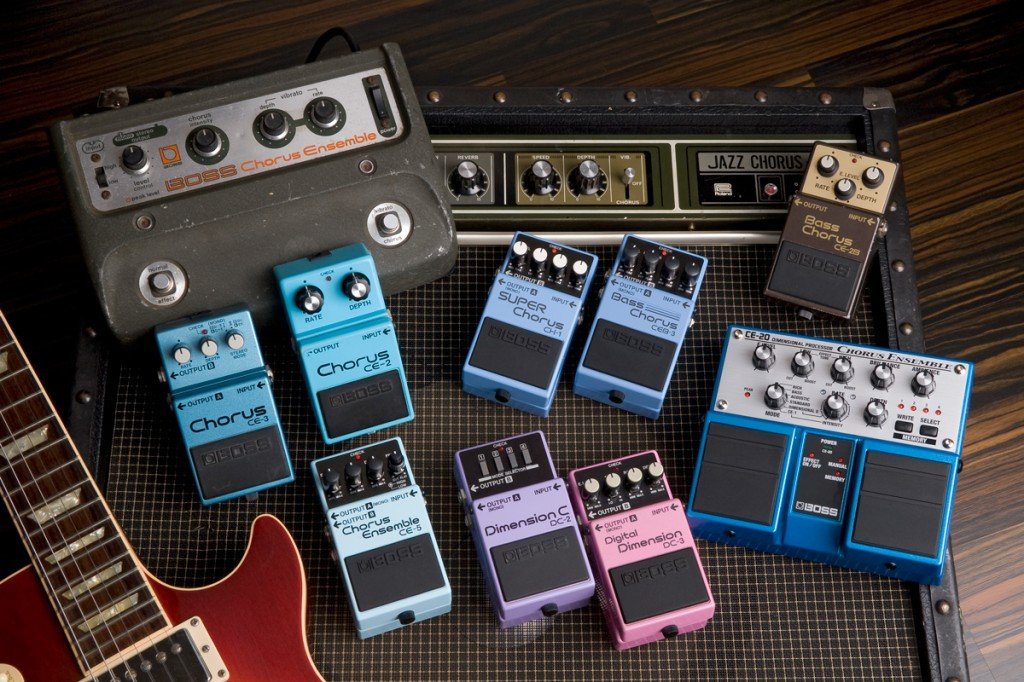
The basic chorus effect involves creating a second, “doubled” signal via a delay line (analog or digital). This doubled signal is delayed and slightly detuned from the original. When mixed together, you hear a thicker, richer harmonic sound.
The MODULATE mode in the BOSS RV Reverb pedals apply the chorus effect to the reverb trails for a complex, dense decay that is rich in overtones. Using volume swells in this mode provide instant ambient tones.
+DELAY
The BOSS RV-3 had a very popular DELAY mode that combined delay and reverb for a huge spatial effect. This mode was like adding an extra delay pedal to your collection for a huge “stacked” sound. As any guitarist with a large pedalboard will declare… one less stomp to make in the complicated tap-dance is always welcomed!
The +DELAY mode is back with the BOSS RV-6! This mode adds a delay before the reverb signal with TIME control affecting the delay time, and TONE controlling the number of repeats. This mode gives you access to classic delays such as slap-backs and longer delays suited for lead playing.
SHIMMER
The “shimmer” reverb effect has made a resurgence in the last decade after its origins in classic rack harmonizer/delays of the ‘80s. This crystalline sound is created by pitch-shifting a separate delay line/s (most commonly up an octave or other harmonic intervals), feedback and EQ modified and mixed with a large reverb sound. This original sound experiment was popularised by ambient masters Brian Eno and Daniel Lanois of U2 production fame.
What you hear is a very ethereal, celestial sound that is ideal for textured soundscapes as opposed to those sweep-picking shred lines you’ve been perfecting. The complex blend of harmonics and pitch-shifted signal is reminiscent of a synthesizer pad and suits slow chords with volume swells.
The TONE knob on the BOSS RV-6 can take the SHIMMER effect from subtle, low-end heavy undertones to a bright, glassy tone that will cut through any mix.
DYNAMIC
When using a reverb with a long decay setting, the “bleed” of the reverb into each note does not lend itself well to fast phrase playing. Many fast notes played in a long reverb mode will produce dense harmonics that will compete with each other. This then produces feedback, and will often turn your sound into mud!
The DYNAMIC mode in the BOSS RV-6 adjusts the reverb mix depending on the attack of your guitar playing. You can choose for the notes to stay “in front” of the reverb and maintain tonal clarity by striking or picking the strings hard. Or play softly for more reverb to wash around your notes.
This is similar to how a gate compressor works – the picked guitar signal determines the attack in which the reverb signal is “ducked” out of the mix. DYNAMIC mode responds to your playing style like no other reverb pedal.
***
Understanding reverb will help you choose the right effect for the track. Selecting the right “space” for your guitar part – whether it is a live room sound or an esoteric shimmer sound – let the BOSS RV-6 envelop your tone in lush ambient spaces that endlessly inspire.
TECHNICAL SECTION – THE STRUCTURE OF A REVERB SIGNAL
A sound wave, when heard through a reverberant space, goes through different phases of attack and decay. These phases are like a fingerprint for the natural acoustic space with each space having a unique harmonic character that it imprints onto the original audio signal.
Let’s take a look at the different phases of the reverb signal and see how they differ between different reverb types.
INITIAL IMPULSE: This is the first appearance of the dry audio signal that is typically a struck chord or plucked string. The sound waves will now begin their trajectory – reflected, and absorbed, by the acoustic space.
PRE-DELAY: The initial time delay in hearing the reverberated sound. The pre-delay determines where you are in the space, relative to the sound source. A long pre-delay typifies a long distance between the listener and the sound source. Guitarists can use this delay to play slightly behind the beat. The long pre-delay generates a “lag” or latency between played string and audio heard from the string.
EARLY REFLECTIONS: The first reverberated signal heard with the clarity of the reflections determined by the proximity of the source to the reflective surfaces. A clap in a narrow hallway projects as a series of short, clearly defined “echoes”. This is due to the clap being surrounded by the walls, floor and ceiling.
REVERB DECAY TIME (RT60): The time it takes for the reverb to decay -60dB from the original amplitude (volume). The reason for -60dB is that a typical orchestral crescendo is 100dB in contrast to the room background volume of 40dB. This standard allows for the comparison of reverb decay times of different acoustic spaces. Close speech has an RT60 of 1 second whereas the Notre Dame Cathedral has an RT60 of 8.5 seconds.
Finally, here is a recording of the world’s longest recorded reverb – an oil storage complex in Inchindown, Scotland. The reverb audio, recorded from a gun-shot, lasted 112 seconds… imagine a G-chord played through a full amplifier stack!
RELATED PRODUCTS



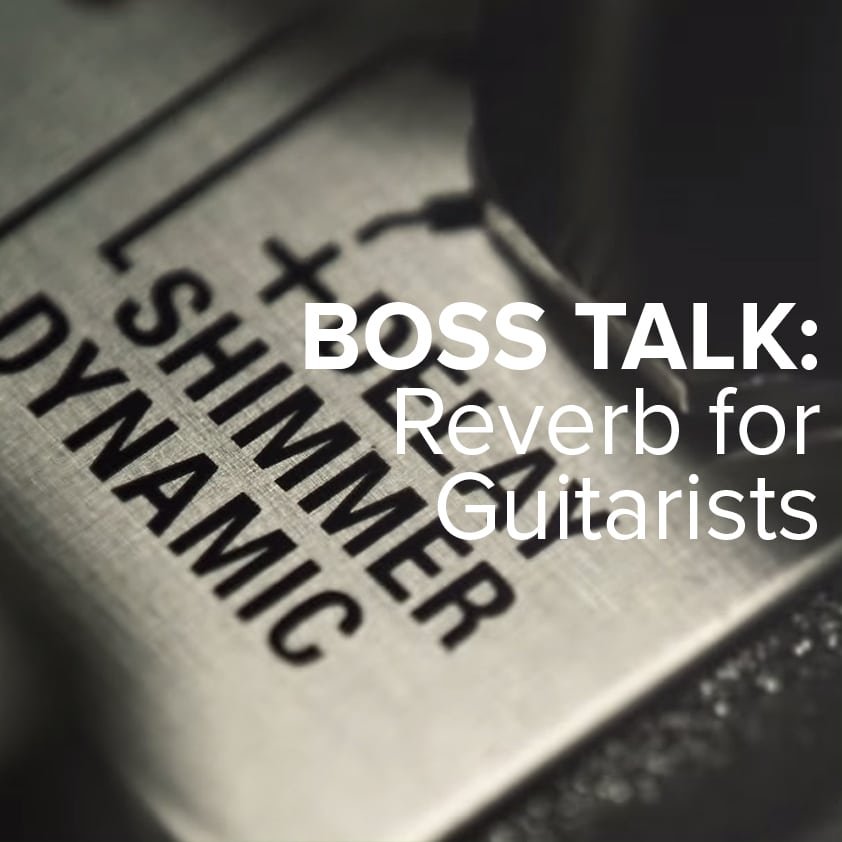
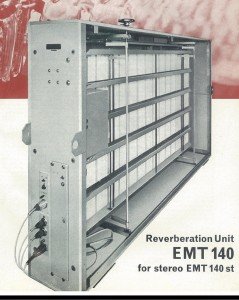 PLATE
PLATE



